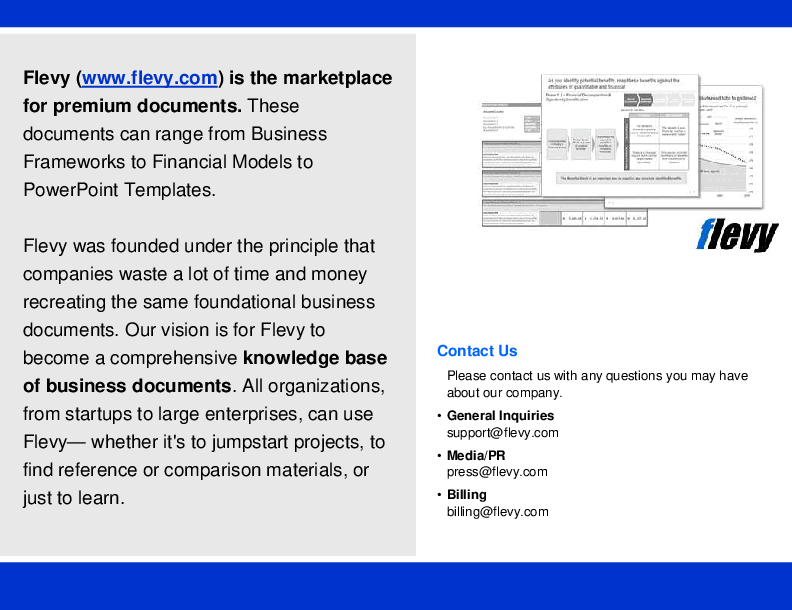Project Portfolio Management (PowerPoint PPTX Slide Deck)
PowerPoint (PPTX) 23 Slides
BENEFITS OF THIS POWERPOINT DOCUMENT
- Provides an overview of PPM
- Provides a set of templates to rapidly launch such a capability
PROJECT MANAGEMENT PPT DESCRIPTION
Project Portfolio Management (PPM) represents the centralized management of processes, methods, and technologies employed by project managers and project management offices (PMOs) to analyze and collectively oversee current or proposed projects based on a multitude of key characteristics. The fundamental objectives of PPM revolve around determining the optimal resource mix for project delivery and scheduling activities in a manner that best aligns with an organization's operational and financial goals, while adhering to constraints imposed by customers, strategic objectives, or external real-world factors. The International standard serves as the defining framework for Project Portfolio Management.
Within this meticulously crafted deck, we shift our focus towards the essential capabilities required in large-scale program/project-driven organizations to effectively manage the critical elements of time, resources, skills, and budgets indispensable for accomplishing all interrelated tasks. Furthermore, this comprehensive resource furnishes a structured framework for issue resolution and risk mitigation, elevating the centralized visibility essential for planning and scheduling teams to identify the most expeditious, cost-effective, or otherwise suitable approaches for successful project and program deliveries.
As a testament to its practicality, this material further provides a set of meticulously designed templates, meticulously crafted to expedite the establishment of a robust PPM capability. If your organization aspires to unlock the potential of streamlined project portfolio management, this document is an indispensable investment that promises to revolutionize your approach to program and project oversight.
In the world of high-stakes project-driven organizations, the mastery of PPM capabilities can make the difference between mere survival and enduring success. Embrace the knowledge and insights encapsulated within this deck, and equip your organization to navigate the complexities of project management with unrivaled precision and foresight. Seize this opportunity to revolutionize your project portfolio management approach and propel your organization towards unparalleled heights of achievement. Secure your copy today and unlock the gateway to PPM excellence.
This presentation outlines a formal portfolio management process that aligns project funding with strategic business objectives and IT direction. It includes a comprehensive set of tools for tracking project performance, managing resources, and ensuring alignment with long-term strategic goals.
Got a question about the product? Email us at support@flevy.com or ask the author directly by using the "Ask the Author a Question" form. If you cannot view the preview above this document description, go here to view the large preview instead.
Source: Best Practices in Project Management PowerPoint Slides: Project Portfolio Management PowerPoint (PPTX) Presentation Slide Deck, Affinity Consulting Partners
PROJECT MANAGEMENT PPT SLIDES
This document is available as part of the following discounted bundle(s):
Save %!
The Affinity Consulting Bundle - business transformation
This bundle contains 11 total documents. See all the documents to the right.









